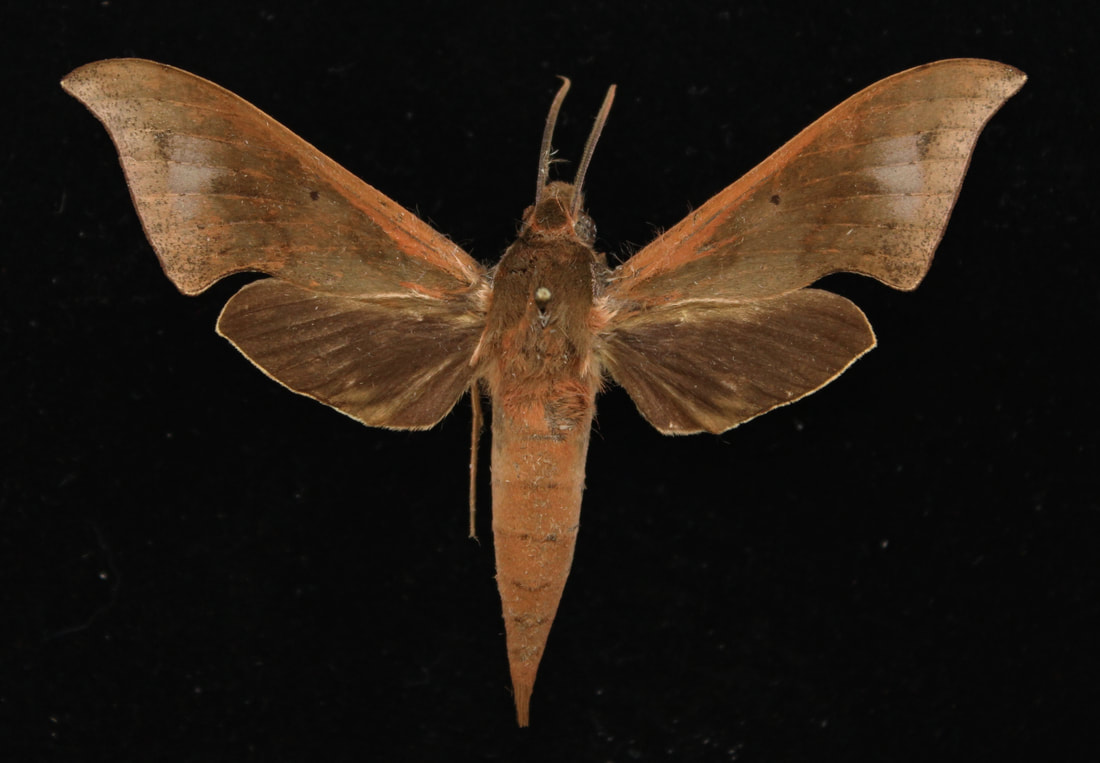|
Common Name: Porcus Sphinx
Ecology and Life History: This moth is active throughout the year in Central and South America. It is a rare stray in the USA with records being in the summer and fall months. This species is attracted to light, and both males and females will come to artificial lights. Bait and other methods are ineffective at attracting this species. While not sexually dimorphic, males are often smaller than females. Eggs are laid on the stems and leaves of hostplants. Habitat and Searching for Larvae: This is a specialist on plants in the Rubiaceae, including Psychotria and Hamelia. Larvae can be found virtually anywhere on the plant. It has been observed that larvae ascend the plants at night to feed, and hide at the base or on surrounding vegetation during the day (5). This is a moth of tropical and subtropical habitats. Larvae can be found year-round in the tropics. If it is breeding in Florida, it should be looked for in the Fall months. While it has not yet been shown, this species almost certainly fluoresces under UV light like many other members of this genus. Rearing Notes: {COMING SOON} |
Adult Description: This is a plain gray moth with forewings measuring 25-42mm in length (2). The forewings are a flat brown-gray color with no maculation. The hindwings are a deeper brown color with lighter brown in the anal angle. The abdomen is brown with a white line outlining the thorax.
Larval Description: L5: Like other Xylophanes larvae, the base color is green. The larva is almost translucent green and has faint yellow diagonal lines on each of the abdominal segments. The lines start below the spiracles and gradually become darker as you move toward the caudal horn. The caudal horn in this species is unique, having a purple base and a green tip. There is a pair of false eyespots on the second abdominal segment. This species like other Xylophanes can retract its head and thoracic segments into the enlarged first abdominal segment. Hostplants Click here to load this Caspio Cloud Database
Cloud Database by Caspio |
The gallery to the left contains photos of Xylophanes porcus adults. The data for each photo can be found by clicking on it. If you have a photo that you would like to submit to us, please contact us using the link at the bottom of the page.
The gallery to the right contains photos of Xylophanes porcus larval and pupal stages. The data for each photo can be found by clicking on it. If you have a photo that you would like to submit to us, please contact us using the link at the bottom of the page.
The gallery to the right contains photos of Xylophanes porcus larval and pupal stages. The data for each photo can be found by clicking on it. If you have a photo that you would like to submit to us, please contact us using the link at the bottom of the page.



